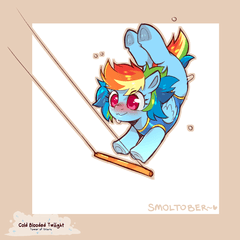How I Draw Anthros, Hybrids, and Monsters
In this tip, I talk about how I conceptualize and draw anthropomorphic creatures, characters, and monsters. An anthro character is a hybrid of human and something else - usually another animal, though it can also be a plant, machine, or literally anything you can imagine.
This one is not a step-by-step “how to draw” sort of tutorial. Instead, I discuss my thought process behind how I create hybrid creatures, along with several examples. I hope it's helpful, entertaining, or perhaps even both!
Here’s a video of this tip. If you prefer a text version, it can be found below.
General Ideas
So, how do you combine human and animal features?
Here are several ways you could combine, say, a human and a cat.
You could go entirely human with a few added features…
A hybrid creature with a mix of both…
Or have the features separated, so parts of the body are entirely human and other parts are entirely cat.
Your anthropomorphic character can be cartoonish and expressive, like a furry character…
Or you can keep their proportions more realistic!
Ears
Let's start with a common trope - adding cat ears to an otherwise human character.
Here’s a human and a housecat. Their ears are attached in very different places, so you’ve got a few choices here!
You can place them in the same spot as a human's ears normally are, which gives them a rather elf-like appearance.
Adding them at the top of the head looks more cat-like, but can look a little strange with human anatomy.
You do see this a lot in anime, however. It’s often disguised with cute hairstyles that make it look more natural.
You can also go pretty much anywhere in-between!
It's a good idea to do some concept sketches, to see what works best for the character you're drawing. Reference photos will help keep your anatomy realistic. (If you want it to be, anyway!)
Tails
Next up - tails!
If you look at the skeleton of various animals, you'll notice that the bones of the tail are a continuation of the spine.
Note: I’ve only drawn some mammals here, but this holds true for birds, reptiles, and fish too - anything with a vertebra!
Sadly, we don't have tails.
But we do have a tailbone, called the coccyx. (Pronounced like “cox-siks”, if you’re curious!)
The human spine starts to bend outward at the base right at our tailbone, which gives us a good place to attach a tail to a character.
Continue the flow of the spine down into the tailbone rather than it curling under as usual.
Now you’ve got a good base to attach whatever kind of tail you want!
Skulls, Heads, and Muzzles
So far, we've stayed pretty human, but what if we want to go further?
Here’s a human and wolf head in profile.
Once again, the skeleton is the best place to start.
Let's imagine a creature at a point exactly halfway between the two.
Once you have this as a base, you can start to imagine how muscle, skin, and fur might go over it. You can go for a direct hybridization - or you can get creative!
I find profiles to be the easiest way to do this exercise, but once you get more comfortable with it, you can start exploring other angles.
This type of creature makes a great halfway point in a transformation sequence, or a really cool monster unto themselves!
Other Hybrid Features
This same technique can be used on any part of your creature.
Here's an example with a single finger.
And here’s an example with a hind leg.
This right here proves how important references and anatomy are - lots of people think dog legs bend backwards, but that's just their ankle!
Separate Parts (Centaurs, Mermaids, and More)
One last form of anthropomorphic creature I want to touch on is the type most often seen in Greek and other mythologies - entirely human sections of the body, attached to entirely beast parts.
The same principles apply as with attaching a tail to the coccyx - be sure there's a natural flow to the body!
For a centaur, the human torso can blend into the shoulders of a horse by comparing where the anatomy makes the most sense. The human spine continues into that of the horse, and the lower torso takes the place of the neck.

You can do the same thing with a fish (merperson), goat (faun), or anything else you want to imagine!
Conclusion
There's a lot of fun creativity and trial and error involved when it comes to making these kinds of beasties. I know they're not always technically anatomically possible - but sometimes you just have to go by the rule of cool. If it looks good, it works.
I hope this gave you some fun ideas to get started! Get out there and draw some hybrid characters. 😺
Be sure to follow me @MsRedNebula on Twitter, Instagram, Bluesky, or Mastodon to see when I announce new tutorials. You can also follow me here on Clip Studio Tips, or subscribe to my YouTube channel.
























Comentario